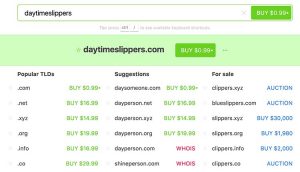When the sales are coming in quickly and the cash is flowing, it’s easy to feel comfortable about the business. There is money in the bank and it looks like everything is headed for big-time growth.
But looks can be deceiving. Too often, business owners are so focused on the wrong numbers or ignoring them altogether, that they fail to see the dangers lurking ahead. It’s like driving around in the dark on a country road without a map, compass, or headlights. Maybe you’re still on the right road, but maybe you’re about to go off a cliff.

One of the biggest reasons for failure isn’t that a company doesn’t have a great product or even that they don’t have enough revenue. Rather, they aren’t paying close enough attention to other indicators like expenses and cash flow.
So turn on the lights and start drawing a map. You may not know exactly where you’re going but knowing where you’ve been and where you are now will help you be prepared for whatever comes your way.
Staring at the numbers too closely or obsessing over everything you can measure will put you at a standstill. Rather, pick the few numbers that will give you an overall sense of how the business is really doing and set up a regular time to review with your leadership team. Do a monthly check-in and compare the numbers to the previous month and the previous year. This will give you an early alert for problems and help determine if new business initiatives are working or not.
Unless you are an early-stage startup without products, the big number to watch, of course, is revenue. That cash coming in is your lifeblood. You need to know if there is a sudden decline so you can figure out what is going wrong. And if it suddenly goes up, great. But figure out why and if there is something you can do to take advantage of it.
But revenue is really only one side of the coin you want to put in your pocket. What are your expenses? If water is leaking out of the boat faster than you can bail, that ship is going to sink.
In short, you need to know whether you’ve got a profit or not. Subtract your expenses from your revenue. Whatever is left is profit. If you’ve spent more than you took in, you’ve got a loss.
This contributes to another number you need to keep a close eye on – cash on hand. How much cash is in your bank account right now? You might be surprised at how many business owners can’t answer that question.
Two closely related numbers to track are accounts payable and accounts receivable. Accounts payable is what you owe for things like products and services you’re purchasing. Accounts receivable is what clients and customers owe you. Looking at these things will help prepare for what’s coming and give you a comprehensive sense of how the business is doing. Maybe revenue is down for the month, but you’re expecting a big payment in a week that will make up for it. Or maybe it looks like you’ve got a good amount of cash in the bank, but a big payment is due in two weeks. It’s better to know now if it’s going to create a problem.
Of course, you should keep a close eye on accounts receivable so you can stay on top of collections. But it can also give you a sense of when trouble is brewing. If your clients are slowing down on their payments, there may be industry-wide concerns that you want to get on top of.
There is a difference between a loan and accounts payable. While both are part of what you owe, the loan doesn’t have to be paid off all at once. The only part that matters for ongoing operations is what is due now. However, you do want to keep an eye on the cost of that loan over the long run. Maybe it is worth it as an investment to bring about bigger profits. But perhaps reducing the cost would be a better way to boost your bottom line.
Set up a dashboard for these numbers that will allow you to see at a glance how things are going and get a sense of what is coming. Having these numbers together allows you to analyze what you’ve been doing and make decisions about what you want to do next.

There are other numbers that can help as well involving the cost of sales and leads. These numbers give you insights into the overall daily performance of the business and long term viability of the current path.
How much does it each sale cost? Divide the number of sales by your expenses. Is that number going up or down? If there is a spike in either direction, start asking more questions.
How many leads are you getting in a month and how much does each one cost? Take the number of leads you get and divide by the amount you are spending on lead generation. How many more leads do you want? Now you can make an estimate of what that would cost.
One final number you can add to the mix is return on investment, ROI for short. This is the benefit gained from efforts put into an endeavor. That could be the money you spend on advertising, the time you spend on calling prospects, or the ice cream you buy for employees on Friday afternoon. The essential part of this equation is determining exactly what you want to measure. Take a look at how much you spent on advertisements, for example. If they were seen by 10,000 people but no one called, did you get the ROI you wanted? In the case of the ice cream, if your employees are happier and more eager to work on Monday, that can be considered a good ROI.
Business & Finance Articles on Business 2 Community
(45)









